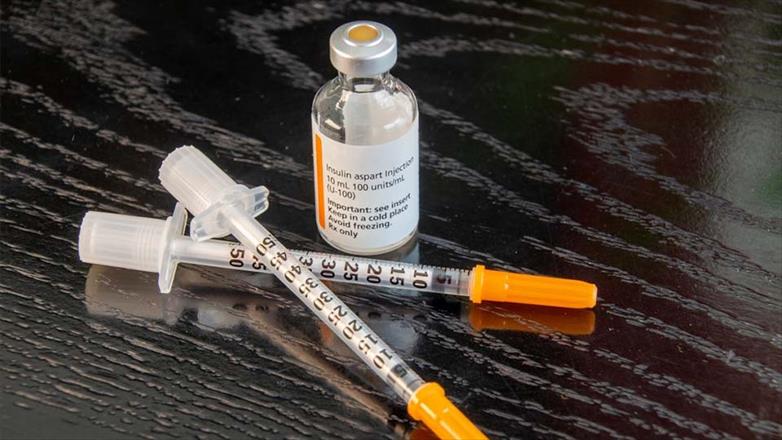Diabetic Ketoacidosis: Symptoms, Causes, Treatment
What are the symptoms of diabetic ketoacidosis?
Diabetic ketoacidosis (DKA) is a serious complication of diabetes that occurs when the body produces high levels of blood acids called ketones. DKA most commonly occurs in people with type 1 diabetes, but it can also occur in people with type 2 diabetes in certain situations, such as during periods of illness or stress. Symptoms of DKA can develop quickly and may include:
- High Blood Sugar Levels: DKA often occurs when blood sugar levels are very high (hyperglycemia), typically above 250 mg/dL (13.9 mmol/L).
- Excessive Thirst: Increased thirst (polydipsia) is a common symptom of DKA as the body tries to get rid of excess sugar through urine.
- Frequent Urination: Increased urination (polyuria) is another common symptom of DKA.
- Nausea and Vomiting: DKA can cause nausea and vomiting, which can worsen dehydration.
- Abdominal Pain: Some people with DKA may experience abdominal pain, which can range from mild to severe.
- Fatigue: DKA can lead to fatigue and weakness.
- Shortness of Breath: Rapid breathing (tachypnea) and shortness of breath may occur as the body tries to compensate for the acidosis caused by ketones.
- Fruity Breath Odor: A fruity or sweet-smelling odor on the breath is a classic sign of DKA.
- Confusion or Difficulty Concentrating: DKA can affect mental function, leading to confusion or difficulty concentrating.
- Dry or Flushed Skin: Dehydration can cause the skin to become dry or flushed.
- Weakness or Fatigue: DKA can lead to weakness or fatigue.
It’s important to seek immediate medical attention if you experience symptoms of DKA, as it can be life-threatening if not treated promptly. Treatment for DKA typically involves intravenous fluids to rehydrate the body, insulin therapy to lower blood sugar levels, and correction of electrolyte imbalances.
What are the causes of diabetic ketoacidosis?
Diabetic ketoacidosis (DKA) is caused by a combination of factors, most commonly high blood sugar levels (hyperglycemia) and a shortage of insulin in the body. The main causes of DKA include:
- Insufficient Insulin: DKA most commonly occurs in people with type 1 diabetes, where the body’s immune system attacks and destroys the insulin-producing beta cells in the pancreas. Without enough insulin, the body cannot use glucose for energy and begins to break down fat for fuel instead, leading to the production of ketones.
- Missed Insulin Injections: Skipping insulin injections or not taking enough insulin can lead to high blood sugar levels and increase the risk of DKA.
- Illness or Infection: Illnesses such as the flu, pneumonia, or urinary tract infections can increase the body’s need for insulin, leading to higher blood sugar levels and a higher risk of DKA.
- Stress or Trauma: Physical or emotional stress, such as surgery, injury, or emotional distress, can increase the body’s need for insulin and trigger DKA.
- Other Medications: Certain medications, such as corticosteroids or diuretics, can interfere with insulin action and increase the risk of DKA.
- Pregnancy: Pregnancy can increase insulin resistance and the risk of DKA in women with diabetes.
- Undiagnosed or Untreated Diabetes: People with undiagnosed or untreated diabetes are at increased risk of DKA if their blood sugar levels become very high.
It’s important for people with diabetes to monitor their blood sugar levels regularly, take insulin as prescribed, and seek medical attention if they experience symptoms of DKA. Prompt treatment can help prevent serious complications associated with DKA.
What is the treatment for diabetic ketoacidosis?
Diabetic ketoacidosis (DKA) is a serious condition that requires immediate medical treatment. The main goals of treatment for DKA are to correct high blood sugar levels, restore electrolyte balance, and reverse the acidosis caused by ketones. Treatment for DKA typically involves:
- Fluid Replacement: Intravenous (IV) fluids are given to rehydrate the body and help dilute the excess sugar in the blood. The fluids also help correct electrolyte imbalances.
- Insulin Therapy: Insulin is given either through an IV or through injections to lower blood sugar levels and stop the production of ketones. Regular insulin is typically used for this purpose.
- Electrolyte Replacement: Electrolytes such as potassium, sodium, and chloride may be given intravenously to help restore balance in the body.
- Monitoring: Blood sugar levels, electrolyte levels, and kidney function are closely monitored during treatment for DKA. Blood gases may also be measured to assess acidosis.
- Treatment of Underlying Causes: If DKA is caused by an underlying condition such as infection, it may be necessary to treat the underlying cause.
- Gradual Transition to Subcutaneous Insulin: Once blood sugar levels and acidosis are under control, a gradual transition to subcutaneous insulin therapy may be initiated.
- Monitoring for Complications: People with DKA may be at risk for complications such as cerebral edema (swelling of the brain), so close monitoring for complications is important.
- Education and Follow-Up: After treatment for DKA, it’s important for people with diabetes to receive education on how to prevent DKA in the future. Regular follow-up with healthcare providers is also important to monitor diabetes control and prevent future episodes of DKA.
DKA is a serious condition that requires immediate medical attention. If you or someone you know experiences symptoms of DKA, such as high blood sugar levels, fruity breath odor, or confusion, seek medical help right away.




